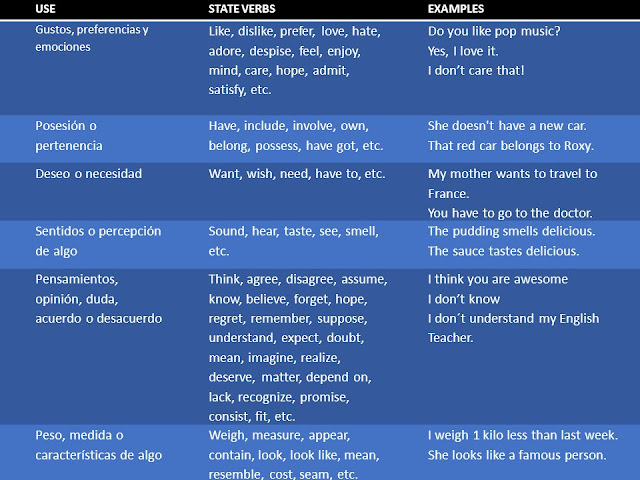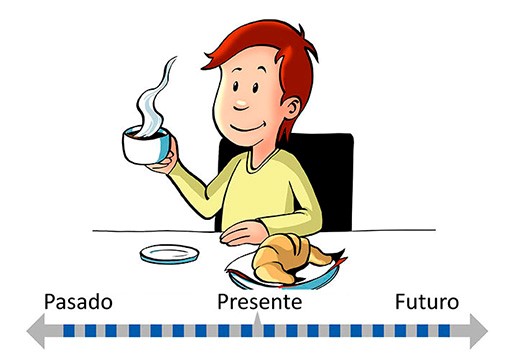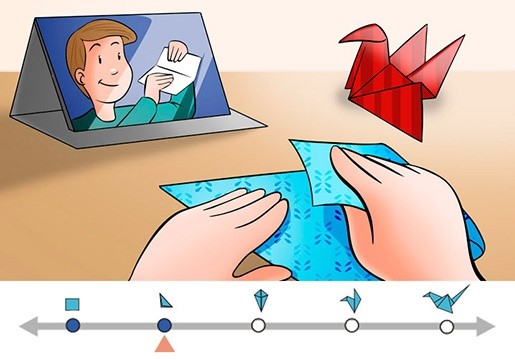¿Cuándo se usa la forma base del verbo?
ACLARATORIA, por dudas frecuentes:
INFINITIVO VS FORMA BASE:
Los especialistas en gramática no se han puesto de acuerdo en el nombre para el infinitivo “sin to”, algunos lo llaman FORMA BASE, zero infinitive, bare infinitive, raíz del verbo, forma básica o simplemente “infinitivo sin to”. Para no seguir confundiendo a los estudiantes, en este blog nos quedamos con estos dos nombres:
1) INFINITIVO: Es el verbo que va precedido con la partícula “to”. (to eat, to be, to sing)
2) FORMA BASE, para referirnos a la forma del verbo que no lleva “to”. (eat, be, sing).
Por lo tanto... el infinitivo es...
Por lo tanto... el infinitivo es...
1) INFINITIVO : To + FORMA BASE: nunca cambia. Esto quiere decir que no se conjuga a presente, pasado ni participio, ni se le añaden sufijos (ing, ed, ies). La partícula “to” forma parte del verbo.
To drive (conducir), to smoke (fumar), to talk (hablar).
2) FORMA BASE – BASIC FORM: Es el mismo verbo infinitivo, pero “SIN TO”. Éstos pueden conjugarse y agregársele sufijos (s, ies, ied, ed, ing). Se considera la forma más básica que puede tener un verbo. Es la forma como aparece en los diccionarios.
Muchos piensan que el infinitivo es la forma más básica del verbo, pero no es así. La forma más básica, es la BASE FORM o forma base. La forma base es exactamente solo el verbo “sin to”, como su nombre lo indica es la base de donde saldrán las modificaciones gramaticales.
Forma base Modificaciones gramaticales
Study studies – studied - studying
Drive drives - driving
talk talked - talks - talking.
¿Cuándo se usa la forma base del verbo?
¿Cuándo se usa la forma base del verbo?
La forma base del
verbo, que algunos llaman “infinitivo sin to”, se usa en algunos casos. Recuerda puedes profundizar este tema en
cualquier libro o web page sobre gramática inglesa:
1) Después de los verbos modales simples: Will, shall, would, should, can, could, may, might, must:
Can you help me?
She will probably be elected.
Kids must be quiet while the teacher speaks.
I can’t play football.
She can't speak to you.
He should give her some money.
He should give her some money.
Shall I talk to him?
I might stay another night in the hotel.
They must leave before 10.00 a.m.
2) Además de los verbos modales, también el verbo en su forma base o infinitivo sin 'to' se usa en los siguientes tiempos verbales:
Tiempo Verbal
|
Ejemplo
|
Presente Simple
|
I play
- She plays
Después del auxiliar do-does:
I don’t
play guitar
Does she play guitar?
|
Pasado Simple
|
Después del auxiliar did:
Did you play the piano?
I didn't play
piano
|
Futuro Simple
|
Después del auxiliar
Will:
Will you play football?
I will play voleiball.
|
Imperativo
|
Play = ¡juega!
|
3) Con los verbos de percepción y sensación seguidos de un objecto o un pronombre: hear, see, feel, smell, watch, notice. Ocurre lo mismo algunas veces con “know y help”
We heard him say yes.
Did you feel the earth move?
Roger heard Roxy admits her mistake.
She saw you eat the pancakes.
I heard her open the door.
He helped me carry the packs.
I saw Roxy arrive one hour ago.
I feel the insect crawl up my arm.
He saw her fall from the cliff.
We heard them close the door.
They saw us walk toward the lake.
She felt the spider crawl up her leg.
4) Luego de los
verbos "make y let" seguidos de un object pronoun u otro objeto:
She lets them stay up very late.
I made him give me the money back.
He doesn’t let me use his computer.
My husband makes me smile all the time.
Let me go. Let’s go.
I made the visitors wait.
Peter lets us examine the documents.
They help us find a place to stay.
Please, let me explain!
Let’s watch the football game.
Her parents let her stay out late.
Let's go to the cinema tonight.
You made me come with you.
Don't make me study that boring grammar book!
5) La partícula
interrogativa "why" va seguida de “forma base" para hacer una
sugerencia.
Why wait until tomorrow?
Why not ask him now?
Why leave before the end of the game?
Why walk when we can go in the car?
Why not buy a new bed?
Para practicar cuando se coloca el verbo
infinitivo o la forma base, aquí te dejamos enlaces para ejercicios online:
Coloca el verbo infinitivo o en su forma base: https://www.vitutor.com/gramatica_inglesa/verb_tense/ing_ej9.html
Coloca el verbo con “to o sin to”, cuidado según el contexto comprenderás que también hay algunas respuestas negativas “no + to + verb”. http://www.ejerciciosingles.eu/ejercicios/1.3-el-infinitivo.aspx
Escribe el infinitivo de los siguientes verbos. http://www.ejerciciosingles.eu/ejercicios/1.4-el-infinitivo.aspx
Te gustó esta clase. COMENTA, PREGUNTA AQUI ABAJO Y COMPARTE CON TUS AMIGOS... Thank you very much.
Suscríbete para recibir nuestras clases semanalmente. deja tu correo en SUBMIT a la derecha.
Suscríbete para recibir nuestras clases semanalmente. deja tu correo en SUBMIT a la derecha.










